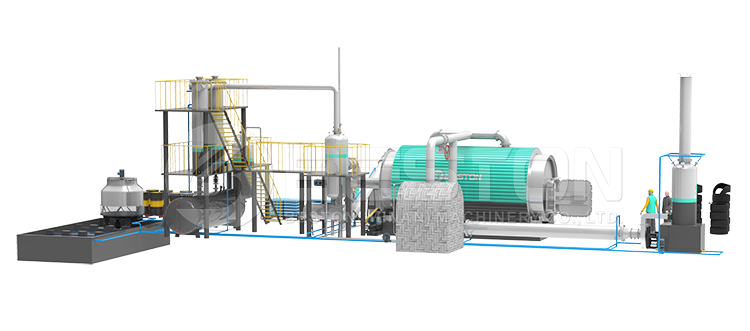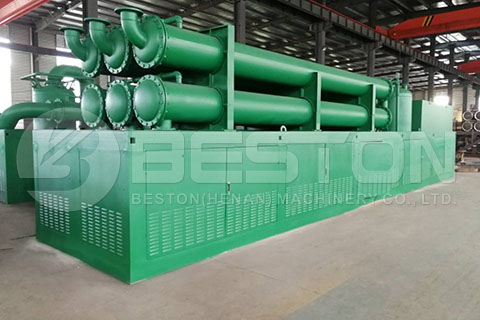Every passing day, the world churns out tons and tons of waste, including tires, plastics, other rubber products and oil sludge. This is the case, everywhere across the world. The waste pyrolysis plant helps owners create value out of all this waste by converting it into fuel oil and carbon black. One of the popular model is the continuous type.
This plant uses the pyrolysis process to break down existing chemical bonds using heat, while facilitating the formation of new ones. Combining this efficient chemical process with the highly effective design of the continuous pyrolysis plant leads to the creation of a rewarding, environmentally friendly and sustainable business opportunity.

Why Does Continuous Pyrolysis Plant Make More Business Sense?
The fully continuous pyrolysis plant is designed to create cost savings during the pyrolysis process by reducing the number of workers involved. Once the raw materials, waste plastic and rubber products, are loaded onto the machine, the pyrolysis process is started and there is no need for human intervention. The machine works continuously for 24 hours, producing fuel oil and any other by-products, depending on the type of material inputs used, automatically and independently.
Furthermore, since this plant works continuously without the need for any unnecessary and time wasting breaks after it is activated, owners can process more waste, producing more fuel oil and therefore maximize their earnings.

To help you understand how this plant achieves all the above, here’s a short description of how it works.
Pre-treatment Of Raw Materials
The waste to be processed is pre-treated before it is taken through the pyrolysis process. This step involves the drying and shredding of tires or crushing of plastics into smaller bits.
Loading Raw Materials
The pre-treated waste is then loaded into the pyrolysis reactor. This marks the last labor-intensive step in the process when using a continuous pyrolysis plant. Once the reactor is fully loaded, it is sealed to keep any gases from escaping during pyrolysis.
Pyrolysis Process
To kick start the chemical process needed to transform the waste into fuel oil and carbon black, the reactor is heated using charcoal, fuel gas or any other economical heating process.
Condensation
The oil formed during pyrolysis is usually in gaseous form due to the high temperatures in the reactor. To cool the gas into liquid fuel oil, it is taken through a condenser. Any gas that does not condense into fuel oil is sent back to the activator to prevent any wastage and enhance the efficiency of the entire process.
Output
The continuous pyrolysis plant discharges the products of the above-described process automatically. This means that the fuel oil, carbon black. If you have a continuous tyre pyrolysis plant, you can also get steel wires in tires, are discharged without any human intervention.
Summary
The continuous pyrolysis plant is designed to achieve the most efficient transformation of the waste inputs. By minimizing labor requirements, wastage and maximizing uptime, the plant makes it possible for owners to build a sustainable business that promises reasonable and consistent returns over the long term.